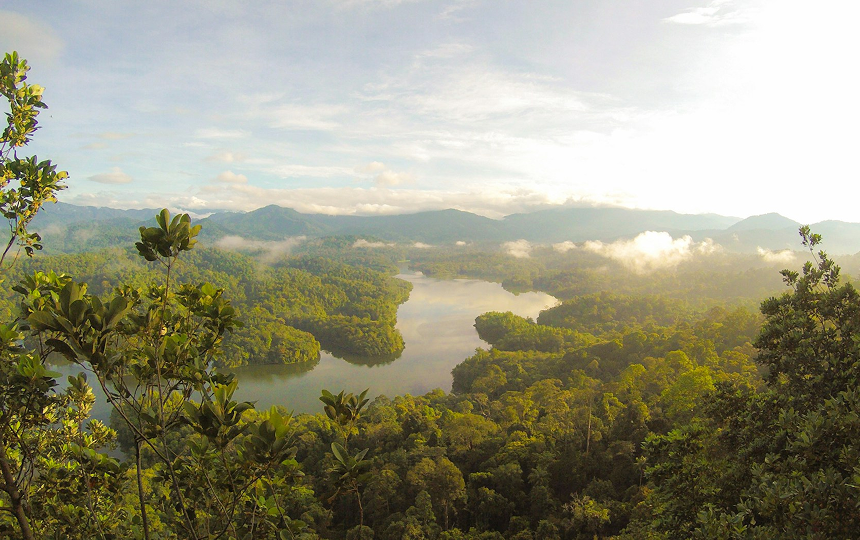During my teenage years, I dedicated countless hours to building virtual cities and enhancing video game characters. I used to play at night, almost always in the early hours of the morning. It was precisely on one of those summer nights when, still a child, I experienced a true emotional odyssey traversing the world of Tierras Perdidas with my dwarf wizard.
Tierras Perdidas is a variation of Argentum Online, a fantasy MMORPG where the two fundamental objectives were:
- Becoming the most powerful character.
- Making your clan the most influential in the game.
There I was, a child and his dwarf wizard, endlessly clicking alongside my companions to defeat one of the most imposing dragons in the game. This dragon, known as the King's Dragon, had a very special peculiarity: upon dying, there was a minimal chance it would drop the black gem, an extremely rare object, crucial for founding new clans, ascending to the coveted rank of nobility, and obtaining large quantities of gold and experience.
The battle against the beast lasted hours and was filled with intense skirmishes against other clans who wanted to steal our reward. However, in the end, fortune smiled upon us and the gem fell before us. We decided to raffle it among all participants and, thanks to the universe, I was the lucky winner.
That night I was profoundly happy. My dwarf wizard was advancing towards nobility, but something more significant occurred: I understood that my virtual companions had become true friends, people I deeply trusted, even though I didn't know their real identities. I felt part of something bigger than myself. Even when I wasn't online, I planned how to help our clan progress and conquer new challenges.
Today I understand that virtuality is not a limitation for Internet. Ultimately, we users are the ones who act upon reality.
¿What is a Pop-Up City?
Each year, the vast Nevada desert transforms into a vibrant metropolis filled with art, music, and an international, interdisciplinary community: Black Rock City. For nine days, this city operates under ten fundamental principles such as gifting, decommodification, and radical self-reliance. During this time, creativity in all its possible forms is promoted, as well as communication and collaboration among participants. Afterward, the city vanishes without a trace, returning the desert to its original state.
At its core, a pop-up city can be understood as a temporary settlement — an ephemeral city — that brings together a collective of people with common interests or objectives, while also providing an environment that encourages communication and collaboration. It then disappears, leaving the least possible trace.
Humans are social creatures, and this concept is not a contemporary invention. Centuries ago, the Silk Road was a fundamental destination for merchants seeking to trade their goods; in Medieval Europe, traveling fairs and circuses brought entertainment, thus becoming the main attraction wherever they went.
While the practical needs of yesteryear no longer exist in our modern cities, the essence of gathering to create and share remains vital. Black Rock City is a clear example: it seeks no immediate functionality beyond providing a space for creativity and human connections to flourish.
But beyond their transitory nature, their true value lies in being a catalyst for opportunities: by creating environments that stimulate communication, collaboration, and creativity, these cities become true stages where the horizon of possibilities is infinite.
From Online to On-Site
The advent of the internet marked the beginning of a much more connected world, enabling faster and more direct communication between people regardless of distance.
Over time, this new capability led to the creation of online communities: collectives formed by individuals of different nationalities who, through forums and blogs, found a virtual meeting space. Despite being separated by thousands of kilometers, these groups coalesced around shared values, ideologies, cultural interests, and even economic incentives.
In parallel, during the 90s, a movement known as the cypherpunks emerged, a group of cryptographers, programmers, and activists who advocated for the use of cryptography as a tool to protect privacy and foster decentralization. More than just a technical community, the cypherpunks laid the philosophical foundations upon which, years later, Bitcoin would emerge.
Interesting fact: Before the creation of Bitcoin, several projects laid the groundwork for modern cryptocurrencies. eCash, Bit Gold, and b-money were some of the first attempts to develop decentralized digital money, and all of them were created by members of the cypherpunks.
The cypherpunks used email lists to exchange ideas about cryptography and alternative financial systems. It was on one of these lists that, in 2008, the famous Bitcoin whitepaper first appeared, signed by Satoshi Nakamoto, who proposed a decentralized digital money system based on blockchain.
A year after that first publication on the mailing list, Satoshi Nakamoto launched the genesis block, the first Bitcoin block, officially marking the network's inception. Shortly after, he created BitcoinTalk, the first forum dedicated to Bitcoin, which quickly became the epicenter of discussion for all topics related to the cryptocurrency. It was in this space that the first Bitcoin community was born, a group of enthusiasts, programmers, and visionaries who exchanged ideas about a technology that no one imagined would achieve such immense success.
While Bitcoin was a pioneer in creating a community around a decentralized protocol, its scope was limited to being a store of value and a medium of exchange. Years later, in 2013, Vitalik Buterin introduced Ethereum, an even more ambitious idea than Bitcoin: a decentralized global computer where any developer could build applications without the need for intermediaries.
Two years later, in 2015, Ethereum became a reality. Unlike Bitcoin, which was designed as a platform for transferring digital value, Ethereum was not limited; with the ability to execute any programmable application (smart contracts), its nature is to be infinite.
Interesting fact: Aya Miyaguchi describes Ethereum as an "infinite garden," a vast and fertile ecosystem that no one can control, but where anyone can build anything. A game with a single objective: to keep playing.
Over time, Ethereum's popularity and adoption grew rapidly, and with it, its community. As new developers, artists, and entrepreneurs joined the ecosystem, innovations emerged that extended Ethereum's impact to other areas of knowledge. The synergy with other disciplines gave way to new areas of work such as decentralized finance (DeFi), NFTs and digital art, and community governance (DAOs).
Prototype of Society
In "The Network State", Balaji Srinivasan introduces the idea that highly internet-connected communities can form new social structures and cities based on shared ideas rather than traditional geographic territories.
This vision, which for years remained in the theoretical realm, began to materialize when Vitalik Buterin launched Zuzalu in 2023. This ephemeral city, located on the coast of Montenegro, gathered hundreds of people — programmers, researchers, and enthusiasts — for two months, united by common interests in blockchain technology, biotechnology, and longevity, regardless of their nationalities or origins.
Unlike a traditional conference or hackathon, Zuzalu functioned as a social laboratory where prolonged coexistence catalyzed innovation. Participants developed and refined technologies such as Zupass, an identity system based on zero-knowledge proofs that rapidly evolved thanks to constant feedback. Dietary regimens inspired by longevity research were experimented with, hackathons produced open-source software, and interdisciplinary collaborations emerged that would have been difficult to foster in conventional environments. The most profound transformation occurred in the mindset of the participants. As Buterin observed: "A four-day conference is a break from your life, but a two-month stay is your life."
Ultimately, experiments like Zuzalu demonstrate that pop-up cities are not mere utopias, but tangible bridges between the virtual and the physical. Their temporary nature — almost like a human-scale sandbox — allows for testing ideas that would be impossible to implement under the bureaucratic weight of traditional cities. The risk is low, but the potential for discovery is immense.
The most fascinating aspect is not what happens during their existence, but what they leave behind. Although they physically disappear without a trace, their true legacy endures in the ideas sown, the projects initiated, and the connections forged. They are, in essence, living prototypes of possible futures: more agile, adaptive, and profoundly human societies, where technology serves to amplify our capacity to create, share, and discover.
Today's Pop-Up Cities
1. Crecimiento
Aleph is a pop-up city established in Buenos Aires, Argentina. Its main objective is to act as a catalyst for cryptocurrency-based solutions, aiming to address the country's economic challenges and foster innovation. It brings together startup founders, developers, experts, researchers, and government leaders to encourage collaboration. Aleph is part of a larger movement called Crecimiento, which seeks to transform Argentina into a global powerhouse for crypto startups and innovation, with the goal of bringing long-term financial prosperity.
Invisible Garden is a program that organizes emerging "developer cities" (dev cities) with a strong focus on cutting-edge technologies like Ethereum, Zero Knowledge (ZK), Artificial Intelligence, and Cybersecurity. Its mission is to cultivate the next generation of developers in these fields.
3. Edge City
Edge City presents itself as a "society incubator" dedicated to promoting human flourishing. Its method involves creating temporary "villages" lasting one month where people from the frontiers of technology, science, and culture gather. These spaces serve as laboratories for conducting real-world experiments with new ideas and forms of collaboration. Edge City's core belief is that significant advancements occur when curious, kind, and proactive individuals share a physical space and a common drive towards progress.
4. Infinita
Infinita is an organizer of summits and pop-up cities specializing in building cities using blockchain technology. Its main event, "Crypto Cities", is aimed at developers, founders, investors, and innovators in the Web3 world.
5. Vitalia
Vitalia bills itself as a "longevity city." Its purpose is to explore the creation of a permanent city focused on a healthier lifestyle and accelerating progress in these areas. Vitalia brings together scientists, artists, biotech engineers, and entrepreneurs passionate about life extension, creating a hub for innovation in the field of longevity.






%204.svg)








